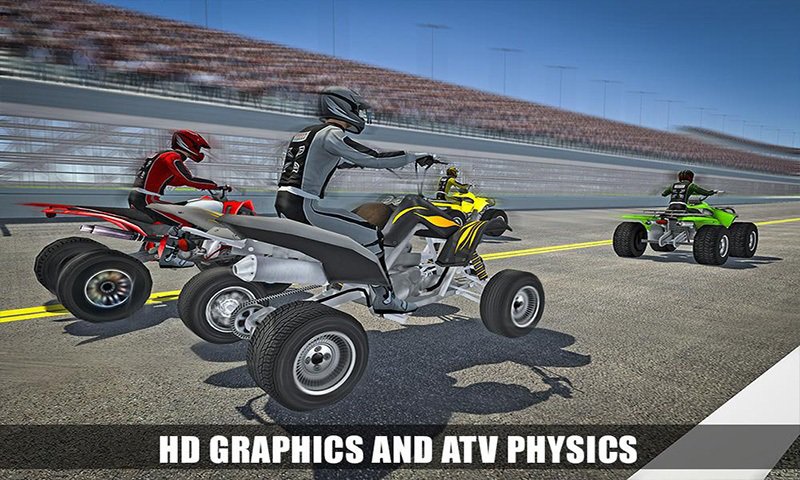Racing ATVs is a great way to stay active, meet new people, and enjoy some healthy competition. But if you want to be safe and successful, you can’t just wake up one morning and decide, “Huh. I think I’ll go enter myself in a quad race this afternoon.”
ATV racing is an intricate sport that requires a good deal of preparation before that first gate drops. It’s not always clear how to get a foot in the door, though. That’s why we’ve put this ATV racing guide together. We’ll cover everything you need to know before entering your first race.
We will note that we’re approaching this topic as if you already own a four wheeler and know how to ride it. If you’re brand new to riding, check out our guide for breaking into the off-road industry. It covers everything from choosing a machine to finding your go-to ride spot.
For those of you who already have a machine and are ready to roll into the racing scene, read on!
Have you been thinking about joining the quad racing scene but aren’t sure where to begin? We’re here to give you some pointers on getting started!While the race is what spectators flock to see, a lot of the work you’ll put in happens long before race day. Here are some things you should do before becoming a regular at the race track.
The first thing you need to do is find a race track so you can keep an eye out for upcoming competitions. Joining area-specific Facebook groups or local racing clubs is a great way to find tracks near you. You can also check with local quad dealers—they can be a helpful resource if you’re looking for race track or event recommendations.
On a national level, you can check out the American Motorcyclist Association’s ATV racing page to learn about the different racing series out there. You can also go to the AMA event calendar and search by state to find specific races near you.
If you want to race, we’re guessing you’d also like to win. But you can’t win if you don’t follow the rules. Be sure to familiarize yourself with the rules and guidelines of each specific race before the event starts. Otherwise, you could end up DQ’d before the race even ends.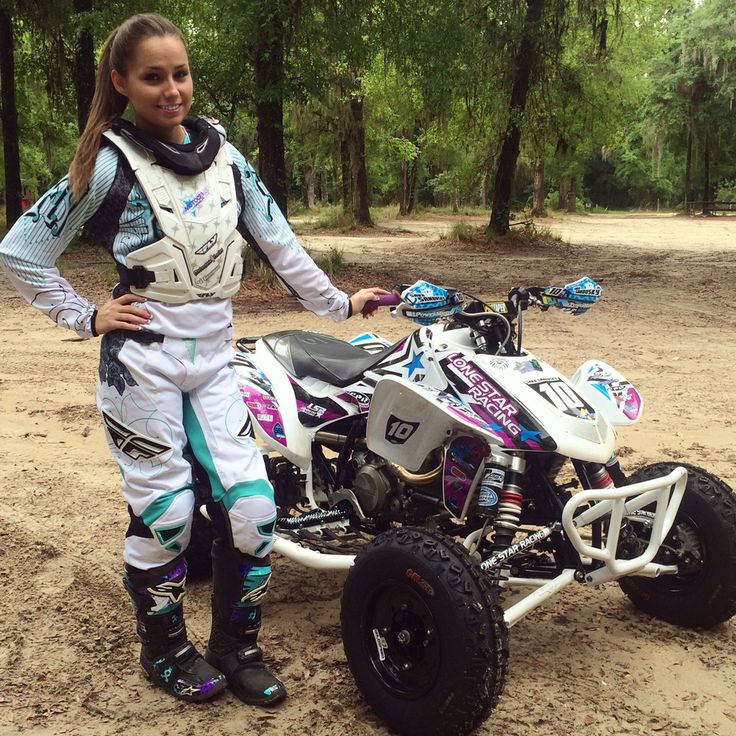
Even experienced riders will want to get some practice time in on the track before entering their first competition. No matter how hard you ride, tearing up the trails is totally different than tearing it up on the race track.
There’s no better way to prepare for race day than to practice. Hit up a race track near you to whip out a few trial laps—even better if you can get some buddies to join you!This part is optional, but it might be something to consider if you are serious about racing. The American Motorcyclist Association sanctions more motorsports competitions than any other organization in the world. Most national series races will require that you have an AMA membership in order to participate, though.
AMA memberships can be pricey, which is why we’re only mentioning this as a suggestion—not a requirement. Most local- and state-level races do not require an AMA membership, so don’t feel like this is something you have to do right off the bat.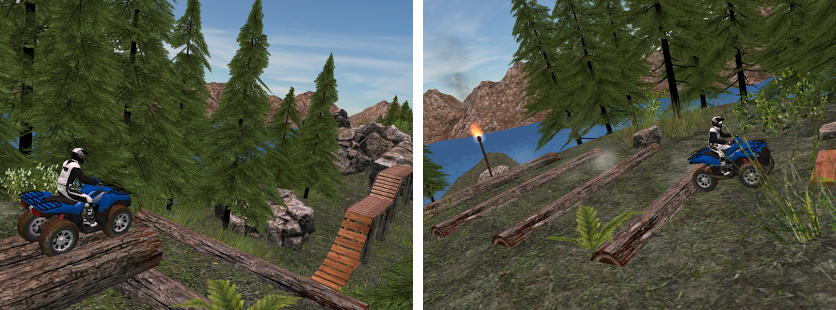
The most important part of preparing for a race is making sure you have the appropriate gear, for both yourself and your machine. Staying safe and protected should be a top priority any time you ride, but especially if you’ll be racing.
If you’ve never raced before, it’s not likely that you’ll have race-appropriate clothing chillin’ in your closet somewhere. Most race organizations are particular about what you wear at events, and for good reason!
While requirements may vary from track to track, here are the most common articles of clothing you’ll want to have:
Check out ChapMoto.com and MotoSport.com for a huge selection of ATV racing gear for all budgets.
What you wear is important while racing, but what’s on your machine is just as crucial. Here are some additions you’ll have to make to your ATV before racing.
Here are some additions you’ll have to make to your ATV before racing.
Tether cord/kill switch: In case of an accident, the cord will pull free from the machine and shut off your engine. Some ATVs come with this from the factory, but if not, you’ll want to install one. They’re not expensive—usually between $20 and $40—and they’re easy to install.
Nerf bars: These are only required for certain types of racing, but even if your specific track doesn’t make you install nerf bars, we recommend them. A little extra protection for your legs and feet never hurt.
Number plates on the front and rear: Almost all race tracks will require that you display a unique three-digit race number on your machine. This helps to reduce confusion in scoring.
Transponder: Many races will also require that you mount a transponder to your frame. This small box has a chip inside that helps race officials track your ATV during the event. You can purchase your own, but renting is an option at many race tracks.
You can purchase your own, but renting is an option at many race tracks.
Aftermarket upgrades: There are no rules stating you have to deck out your ATV with specialized tires or upgraded suspension parts in order to race. However, upgrades like this definitely don’t hurt if you’re in it to win it.
To keep up with seasoned riders, you may want to make a few upgrades to your race quad. These guys are running SuperATV’s Assassinator Tires—they’re perfect for tearing through muddy tracks without getting stuck.So you have your ATVA registration, race clothing, and modified machine. You’ve found a race track and put in some practice hours, and now you’re ready to register for your very first event.
The first thing to decide is what class you’ll race in. Classes are based on engine size, experience level, age, and/or gender. The biggest piece of advice we can give you here is to look at experience level above all else. You don’t want to jump into an intermediate or expert-level race on your first try. Click here for an example of what classes are available for ATV Motocross’s 2021 season.
You don’t want to jump into an intermediate or expert-level race on your first try. Click here for an example of what classes are available for ATV Motocross’s 2021 season.
Once you’ve pinpointed your event and know what class you’ll race in, it’s time to register. Most events offer pre-registration, which we recommend out of convenience. It’s much easier to fill out your registration form online than scramble to get it done the morning of, when there’s a long line behind you.
When race day arrives, you’ll want to show up early to get a good parking spot and leave yourself plenty of time to sign in. (Even if you’ve pre-registered online, you’ll have to sign in when you get to the race track.) Expect big crowds and long lines, and plan accordingly!
Find out ahead of time if there is a racers’ meeting before the event and then allow yourself plenty of time to attend. This is your chance to review the race rules one last times and ask any questions you may have.
You may also have to attend a tech inspection prior to the race. An official will inspect your machine and make sure you have a functioning transponder and kill switch, and that your race numbers are visible and in the proper location.
After months of hard work and preparation, race day is your time to shine. Get to the track early and give yourself plenty of time for racers’ meetings and pre-race inspections.As you can see, getting ready for your first ATV race requires a lot of planning and prep work, and that preparation isn’t always cheap. Like most competitive sports, ATV racing is an investment.
But how much money can you expect to spend when starting off? It’s hard to say exactly, when helmets can run you anywhere from $90 to nearly $750.
We still want to give you a rough estimate of what everything could potentially cost, though. So we’ll drop some averages down below and you can take those with a grain of salt, remembering that a lot of these expenses, like how much you spend on that racing helmet, will vary.
Adding all of these up gives you a total between $800 and $1150. (Again, these are just rough estimates!)
So there you have it—a quick step-by-step guide to joining the ATV racing community. Starting something brand new can be intimidating but with the proper preparation, gear, and machine, you’ll be set up for success in no time.
We’ve gone over a lot of helpful information today, but we’ll end on the most important note—stay safe and, just as importantly, have fun with it. Good luck at your first race!
As an avid former racer and part time current racer I was not at all patient about getting my kids into racing quads. I'll be the first to admit that I'd be hard pressed to explain the difference between a knuckle ball and a bowling ball, or how many innings there are in the SuperBowl.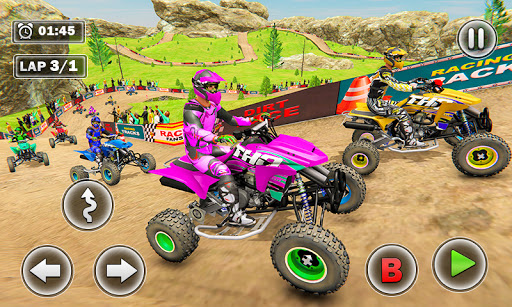 .. so while the other neighborhood kids are playing catch with their dads, my boys are busy polishing their late-braking skills and jumping prowess. Trail riding together on the weekends is heaven, but racing together is the icing on the cake.
.. so while the other neighborhood kids are playing catch with their dads, my boys are busy polishing their late-braking skills and jumping prowess. Trail riding together on the weekends is heaven, but racing together is the icing on the cake.
I'm sure some of you are quietly nodding your heads in empathetic agreement, but many of the rest are aghast at the thought of letting kindergarteners race machines weighing 3-times as much their peewee pilots, at speeds much in excess of the top speed of a grown man. But given the right preparation it's no more dangerous than sled riding or skateboarding. And the personal satisfaction and reward offered to the racer can build lasting confidence and pride, given the right mindset. At this stage of the game finishing well is relatively insignificant. It's the accomplishment of having raced that's important.
This article is meant to offer some insight into the preparation required to ready a racer and machine for their first racing event- both mechanically, and in mind.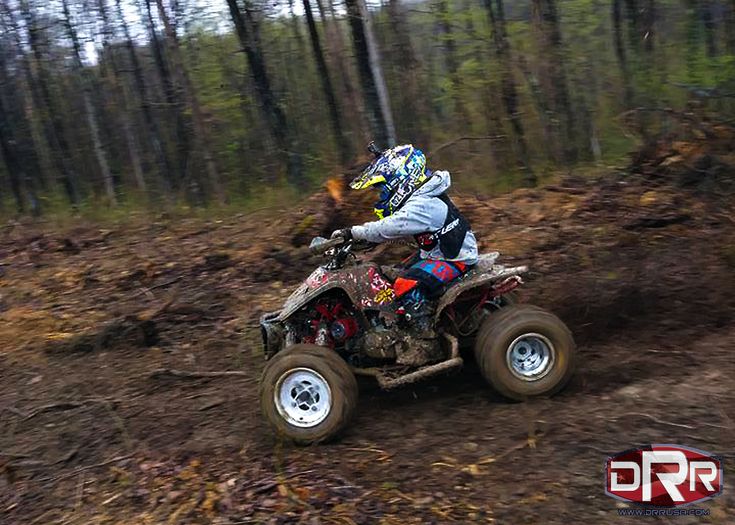 I am the father of two boys ages 5 and 7 that recently had the opportunity to enter a local motocross race. Both are avid quadsters having been on 4 wheels for more than a year (20% of their life?). The younger is the daredevil, born-to-be-racer. The older is the more cautious, methodical, careful one. They each required their own specialized guidance in their respective racing endeavors.
I am the father of two boys ages 5 and 7 that recently had the opportunity to enter a local motocross race. Both are avid quadsters having been on 4 wheels for more than a year (20% of their life?). The younger is the daredevil, born-to-be-racer. The older is the more cautious, methodical, careful one. They each required their own specialized guidance in their respective racing endeavors.
Making sure the quad is thoroughly inspected before race day is critical, both from a safety standpoint as well as a competitive one. The last place you want to break something or find a missing or loose bolt is after psyching your kid up for the whole thing, spending 30 bucks in entrance fees, and driving an hour just to watch others race around the track. Invite your racer to help- it's as good a time as any to get buy in and demonstrate commitment.
Top off the gas tank and oil reservoir, and check your tire pressures. Pop a new spark plug in if your machine has a reputation of being finicky.
Most racing associations and tracks will require you to install a safety tether which is basically a switch that kills the motor when a cord attached to the rider detaches from the handlebars- much like personal watercraft. You can also use the training tether many mini-quads already have. Just connect the end of it to the riders pants.
The other item most tracks will require is a rear number plate. Generally, a piece of white plastic about 8x10 with two holes near the top zip-tied to the rear grab bar will suffice. Add a 6" black 1 or 2 digit number of his/her liking to the plate.
The single most important thing you can do especially for a racer that's apprehensive is to give him the opportunity to practice in a race-type setting. Not in grampa's backyard or the local trail. At a race track. Find out when practice time is offered and spend some time on a real motocross track, just like the real thing just without the hoopla of race day.
Start him out slow using the throttle limiter.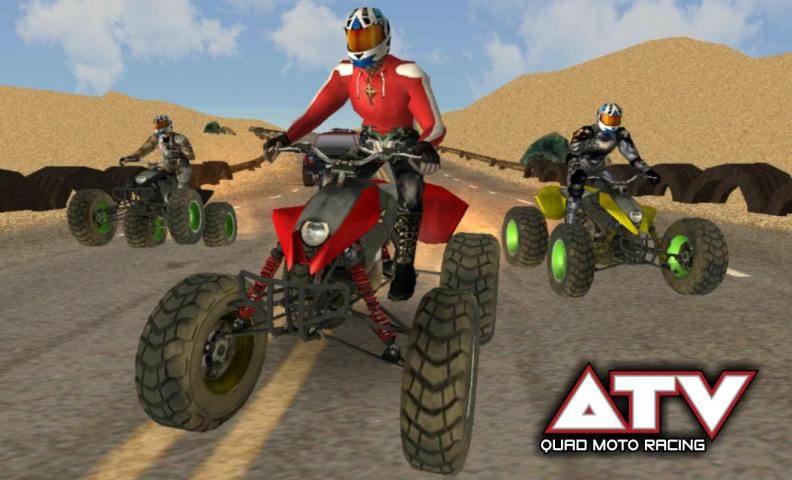 It's better to have the machine be the limitation on speed than the rider. It'll force him to make better use of what power is available and concentrate on perfecting his riding skills instead of exploring his limits of control. Gradually add more throttle as his skills develop.
It's better to have the machine be the limitation on speed than the rider. It'll force him to make better use of what power is available and concentrate on perfecting his riding skills instead of exploring his limits of control. Gradually add more throttle as his skills develop.
This is the time to inundate him with encouragement. He's likely to be very self-conscious and insecure about his racing competence. Greet him at corners and provide positive feedback and enthusiasm.
It's a good idea to bring him in every 15 minutes or so to debrief and discuss how he feels about his riding. Don't overdo the coaching. Racing at this level is all about fun. It's later on that we turn them into ruthless, competitive fiends. ;)
Obviously, a helmet is a necessity but here's a list of other gear either required or recommended for racing.
Most race tracks will require motocross boots. Some will allow hard soled over the ankle type work boots, but they really don't offer the protection of proper riding boots. Decent boots can be had for about $90 new or cheaper if you can find them on an internet based auction.
Decent boots can be had for about $90 new or cheaper if you can find them on an internet based auction.
Goggles if not required are common sense. Get a pair. Same goes for gloves.
Chest protectors are a good idea. They can prevent injuries to the collarbone and chest area should the rider part company with the quad, or should he slam his chest into the handlebars.
At long last, race day. Probably as many butterflies as the first day of school. Not to worry, that's what makes it fun.
Usually, tracks will start out with a few laps of practice. For kids this is imperative so as to get comfortable with the layout of the track. You can even walk the track beforehand to get a preview of the course.
After practice, usually a racers' meeting follows. The class running order is laid out along with other pertinent racing details. Make a mental note (or written) of when his class races and which class(es) race immediately before.
The moment of truth.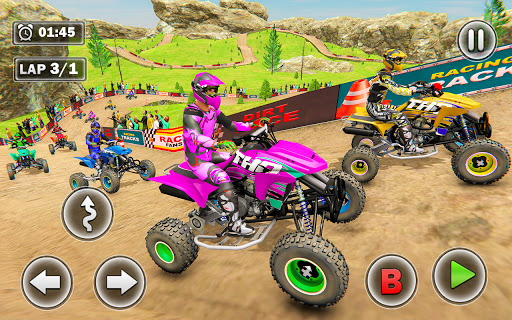 His class is staging. Get him prepared early so in the event the goggles are misplaced or the quad won't start you'll have time to recover. Provide some last minute encouragement, but don't overdo it now. (And forget about the holeshot- it ain't gonna happen.) Let it all sink in. By now that little heart is beating like hummingbird's.
His class is staging. Get him prepared early so in the event the goggles are misplaced or the quad won't start you'll have time to recover. Provide some last minute encouragement, but don't overdo it now. (And forget about the holeshot- it ain't gonna happen.) Let it all sink in. By now that little heart is beating like hummingbird's.
Help him stage at the starting gate. If there's no actual gate the start may be a little odd (no "mark, get set, go"). Just a sudden dash of quads leaving the start for no apparent reason even though the starter has given the "go" signal. (Both my kids left late not knowing what the actual starting cue was.) Don't worry about it. For them it's probably more fun trying to catch up and pass slower riders than leaving in a fury of tires and dust heading for the first corner.
At this point all you can do is watch. Try to find a corner to watch from and shout out to him to offer encouragement. If he crashes, biffs, or stalls brush him off, ask if he's OK, and get him back on.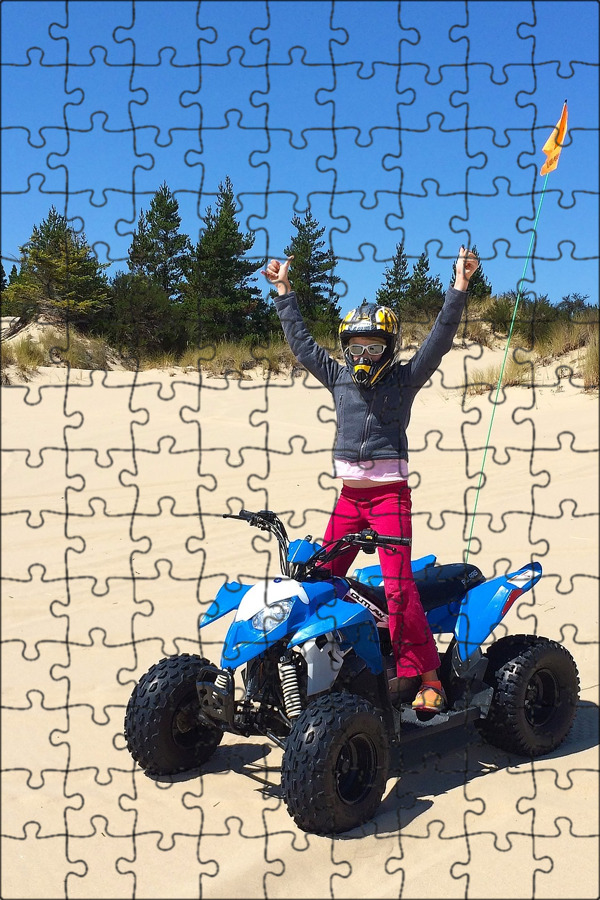 Finishing is important, not where you finish.
Finishing is important, not where you finish.
Finding a local race
Unless dad (or mom) is already involved in motorcycle racing, finding some organized competition may take some doing. A good place to start is the American Motorcycle Association's (AMA) ATV body, the ATVA, whose site is at www.atvaonline.com. Use their Racing pages to locate an event near you. Another more traditional approach is to call or visit your local motorcycle dealerships. And as a last resort, search the internet for "ATV racing" + "your state". Good luck!
Articles
18 Mar
Today quite confidently came and walks all over the country such kind of active recreation as quad biking. To make riding an all-terrain vehicle even more attractive, companies began to organize various kinds of competitions and races.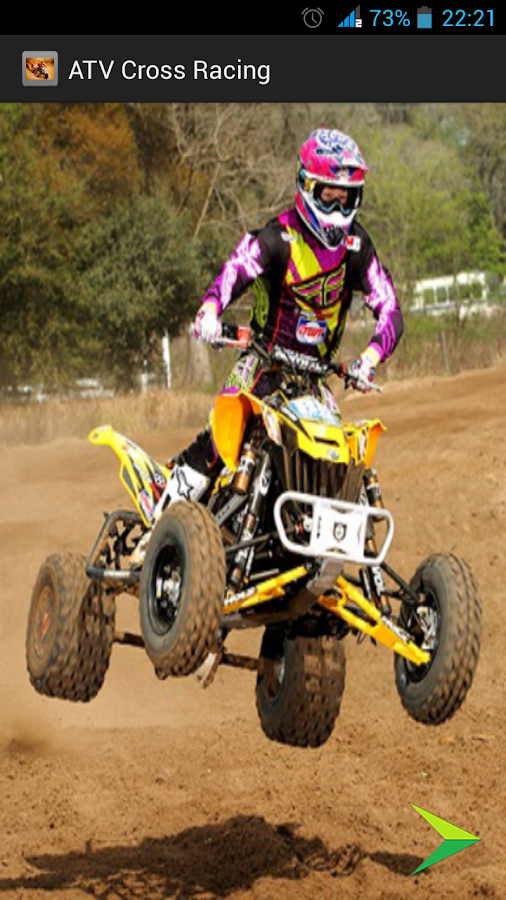 In fact, the idea of racing and competition immediately attracted many fans of outdoor activities. These events are held both between professional athletes and amateurs. Everyone can take part in a very exciting all-terrain vehicle race. A four-wheeled race will give you a storm of emotions and will definitely not leave you indifferent to this sport.
In fact, the idea of racing and competition immediately attracted many fans of outdoor activities. These events are held both between professional athletes and amateurs. Everyone can take part in a very exciting all-terrain vehicle race. A four-wheeled race will give you a storm of emotions and will definitely not leave you indifferent to this sport.
ATV Racing
ATVs are such versatile vehicles that you can master them in minutes. If you have no experience in driving an all-terrain vehicle, you will be given a short briefing, as well as a few test runs with you. Thus, in an hour you will already be doing great off-road with this vehicle. Moreover, it is absolutely not necessary to have a driver's license for competitions or races. In this regard, races can also be held for the smallest extreme sportsmen, of course, on the appropriate ATVs. Children over the age of 16 are allowed to ride adult quads.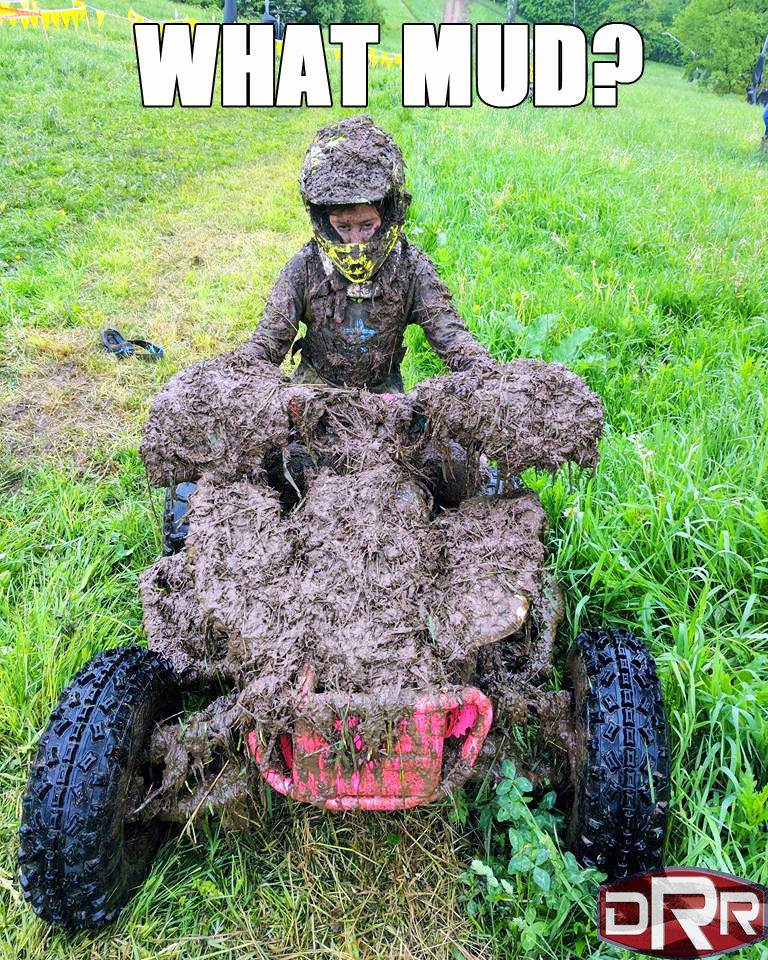
Quad bike stunts
Quad bike competitions can be held both in speed over obstacles and in performing certain tricks. Any of these types of championships will be exciting and very memorable. For the safety of conducting competitions in high-speed overcoming of obstacles, the participants of the race start one after another with a time interval or from different sections of the route. When performing tricks, the correctness of the performance and complexity are evaluated. By holding such events, the organizers secure themselves, and a team of medical staff is on duty. If you are not confident in your skills, then the best option is to practice a little more, because you can create an emergency in which you can drag someone else. Therefore, you can just go out of town and spend some time acquiring skills to overcome obstacles, and then go and try your hand at the championship. Championships are held with different meanings. The very initial stage is city competitions, then regional, regional, national championships, etc. As you can see, quad racing is common enough at various levels that there is something to strive for.
As you can see, quad racing is common enough at various levels that there is something to strive for.
Quad bikes for racing
It happens that the desire is just a fountain, but the funds do not allow you to purchase a personal quad bike. For this, there is an ATV rental, and this is very popular. The convenience and popularity of rental outlets is as follows: there is no need to buy your own ATV, the company takes care of refueling and repairing the motorcycle device, you do not need to waste time looking for a race track (the rental company will do this), you do not need to get rights, because the race will take place on a special closed track . Such services are very convenient, since all the above advantages of rental companies can also be attributed to the fact that they deliver equipment to the place of the championship or competition themselves. These companies have another feature. If you don't have quad experience, they will provide you with a beginner level course.
It can be seen that this sport is very popular, and the company can take care of all the minimal organizational difficulties.
Quad racing is now firmly established as a recreational and amateur sport. Manufacturers of all-terrain vehicles are increasingly organizing various competitions on these machines in order to increase demand for them among the population. Not only thrill-seekers, but also professional racers take part in such races. In fact, anyone can try their hand at such a competition - this does not require special skills. But the adrenaline rush will be provided.

Both competitions are very exciting and spectacular. The start is made in turn, after a certain time or from different sections of the route. This is for safety reasons. In speed racing, the winner is the one who overcame all the obstacles on the track and came to the finish line first. Such races take place mainly in the championships. And when demonstrating acrobatic elements, their complexity and performance technique are evaluated. Here, pilots accelerate to 150 km/h and perform maneuvers or jump from springboards at this speed. In performing tricks, athletes compete in various festivals.
Interesting all-terrain vehicle races are held in various regions of our country. Rugged terrain with various landscape obstacles is selected for them: swamps, small reservoirs, forest belts, etc. Such events can be attended not only by a professional, but also by anyone, even those who have never driven an ATV. It is also important that you do not need a license to ride an ATV. And there are no requirements for the vehicle itself - only its cross-country ability and endurance are the defining characteristics.
And there are no requirements for the vehicle itself - only its cross-country ability and endurance are the defining characteristics.
First-time contestants receive a mandatory 10-minute briefing. Only after that he is allowed to go on the route. It is not difficult to learn how to drive this car, usually 2-3 races are enough. There are ATVs even for young riders: they reach speeds of no more than 30 km / h, are maneuverable, stable and have a reliable braking system. Children 6-9 years old can learn to drive such a car. For teenagers 12-15 years old, all-terrain vehicles with more powerful motors are provided. And you can sit on an adult ATV from the age of 16.
As far as the sports tracks for professional championships are concerned, only certain types of ATVs are allowed on them. This will require certain skills, including the ability to quickly make decisions in unforeseen situations. A professional pilot needs not only to be able to control an all-terrain vehicle, but to feel it, to know the features of this technique.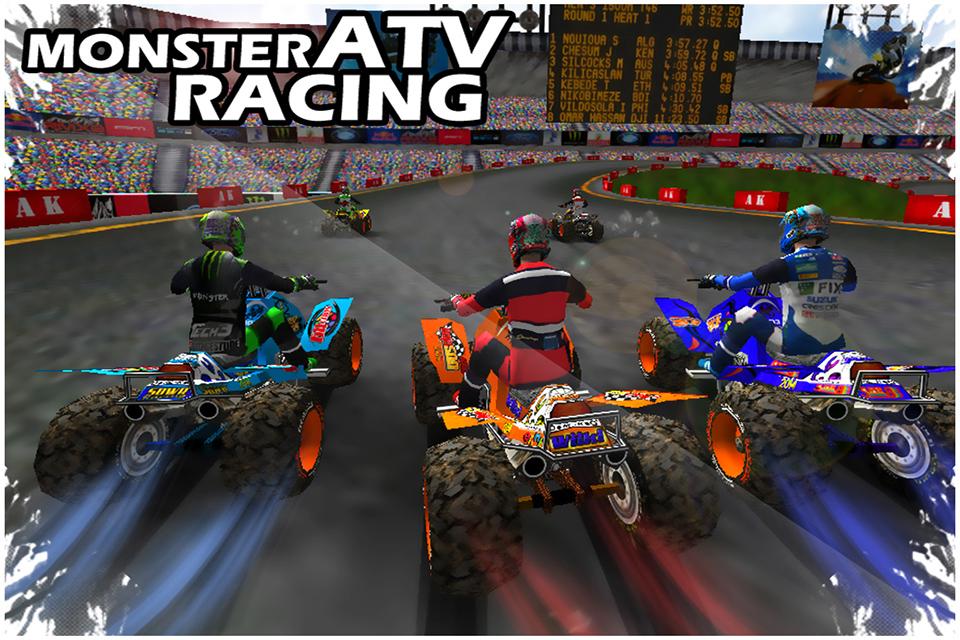
City competitions are the first step towards professional sports, in which even a beginner can take part. To do this, it is enough to go out of town and practice riding an ATV and overcoming obstacles. The all-terrain vehicle is designed to quickly master the features of its management, and therefore it will soon be possible to try your hand at competitions.
As already mentioned, only specially equipped ATVs are allowed in professional championships. These should be sports cars with high speed performance. You can also buy ordinary ones, but they will have to be tuned, and this will take a lot of time and money. First of all, you need to improve the engine, wheels and brakes, and then you need to work on the body.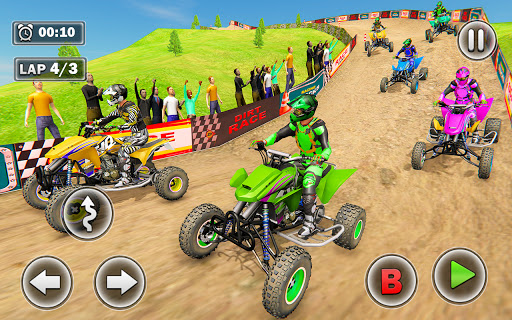
Only pneumatic tires for ATVs with an outside diameter of up to 76 cm may be used in competition. Tire treading must not be changed.
ATV must be equipped with headlights. It can be both regular and LED. Before the races, the serviceability of the parking lights and the rear brake light must be checked.
A winch is a mandatory piece of equipment. There can be no more than two on one machine. In addition, the ATV must be equipped with a sling with a belt width of 40 mm or more. This will ensure the safety of the tree bark if it is necessary to use a winch.
Modification of the engine and braking system, as well as the replacement of wheels, is best done in specialized services and specialists, since the safety of both the pilot and others depends on this. After all the work carried out, it is recommended to perform test runs to make sure the ATV is reliable.
Before the start of the races, you should check the serviceability of all elements of the chassis of the ATV, otherwise a breakdown may occur during the race even for a banal reason. If you properly prepare the equipment, then it will be much easier to overcome a difficult path on it, and the driver’s chances of success will increase.
If you properly prepare the equipment, then it will be much easier to overcome a difficult path on it, and the driver’s chances of success will increase.
Those for whom ATV racing is not a professional activity, but a way of having fun, rarely buy a sports car. And it happens that there is such a desire, but finances do not allow. In such a situation, the best solution would be to rent an ATV.
There is another positive point, especially important for beginners: for those who do not have enough experience in driving an ATV, a special entry-level track is provided.
But the pilots themselves should not forget about safety precautions. First of all, be sure to wear protective clothing and a helmet. It is also important to keep a distance, to avoid collision with cars of rivals. For those who are not completely confident in the skills of riding an ATV, it is better to practice more before entering the race track. An ATV is a fairly aggressive vehicle and awkward handling can cause an accident.
Those who participate in the competition for the first time should familiarize themselves with the features of the upcoming route before the start of the race. Usually, the organizers of the competition provide such a right to the participants.